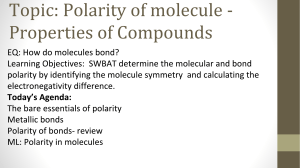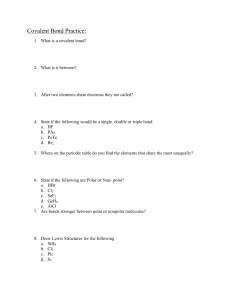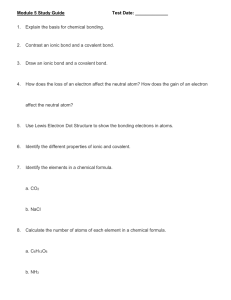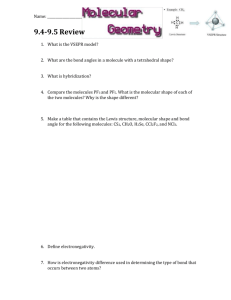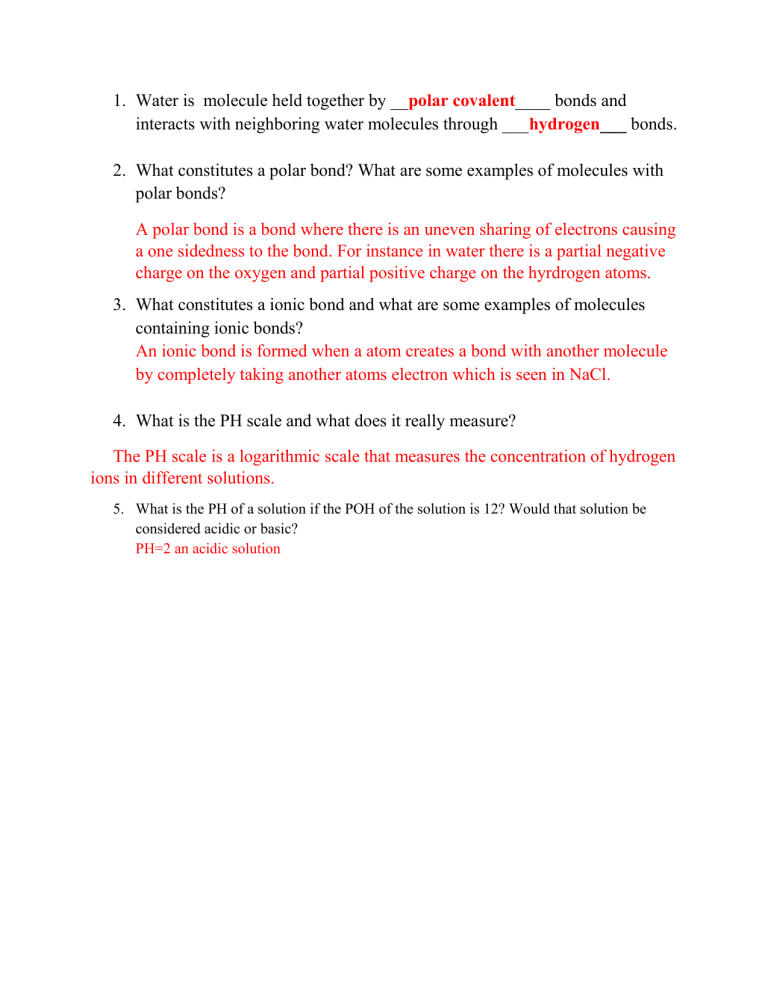
1. Water is molecule held together by __polar covalent____ bonds and interacts with neighboring water molecules through ___hydrogen___ bonds. 2. What constitutes a polar bond? What are some examples of molecules with polar bonds? A polar bond is a bond where there is an uneven sharing of electrons causing a one sidedness to the bond. For instance in water there is a partial negative charge on the oxygen and partial positive charge on the hyrdrogen atoms. 3. What constitutes a ionic bond and what are some examples of molecules containing ionic bonds? An ionic bond is formed when a atom creates a bond with another molecule by completely taking another atoms electron which is seen in NaCl. 4. What is the PH scale and what does it really measure? The PH scale is a logarithmic scale that measures the concentration of hydrogen ions in different solutions. 5. What is the PH of a solution if the POH of the solution is 12? Would that solution be considered acidic or basic? PH=2 an acidic solution CHAPTER 2 ACTIVITY: ATOMS AND BONDS (Key) (recall and comprehension) Test your knowledge. Match the statements with the best answer below. Answers can be used more than once. A. IONIC BOND F. NUMBER OF PROTONS B. SINGLE COVALENT BOND G. OUTER ELECTRON SHELL C. DOUBLE COVALENT BOND H. WATER D. POLAR COVALENT BOND I. ELECTRON E. NITROGEN J. NONPOLAR COVALENT BOND 1. C. DOUBLE COVALENT BOND: formed by the sharing of two pairs of electrons 2. F. NUMBER OF PROTONS____ determines the atomic number of an element 3. D. POLAR COVALENT BOND formed when atoms share a pair of electrons from their outer shells, but the electrons are not shared equally 4. H. WATER an example of a molecule with a polar covalent bond 5. E. NITROGEN has an equal number of protons and electrons 6. J. NONPOLAR COVALENT BOND type of bond found in a molecule that cannot dissolve in water 7. J. NONPOLAR COVALENT BOND formed when two atoms share pairs of electrons from their outer shells, and the electrons are shared equally 8. G. OUTER ELECTRON SHELL location of electrons that determine how an atom will form a chemical bond 9. B.SINGLE COVALENT BOND bond formed when two atoms share one pair of electrons from their outer shells 10. I. ELECTRON negatively charged particles of an atom 11. D. POLAR COVALENT BOND type of bond found in a water molecule 12. D. POLAR COVALENT BOND type of bond commonly found in water soluble organic molecules
